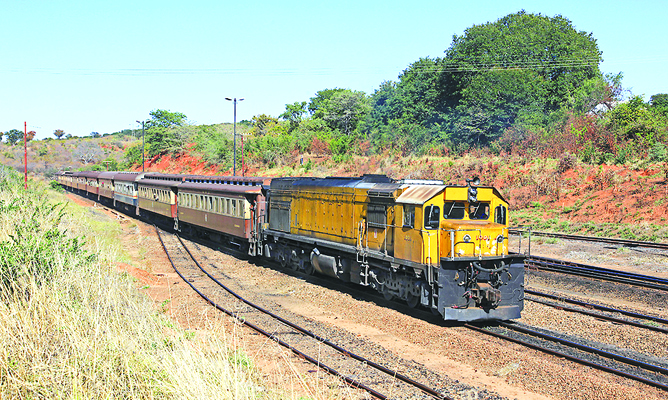
THE financially-struggling National Railways of Zimbabwe (NRZ) yesterday held a recapitalisation pre-bid conference in Bulawayo, as it seeks to raise $400 million to revive its operations and to repair infrastructure and equipment, to regain its lost market share.
BY SILAS NKALA

Addressing prospective bidders, who included international and local investors, NRZ deputy board chairperson, who is also chairman of the recapitalisation steering committee, David Chiweza, said at least 53 potential investors had responded to the bidding calls.
NRZ board chairperson, Larry Mavima said the goal of the recapitalisation programme was to re-equip the parastatal and make it more competitive.
“The general decline in Zimbabwe’s industrial performance over the last three decades has resulted in diminishing railway traffic volumes that have led to operational deficits,” he said.
“To restore viability, there has to be an increase in rail traffic and I am pleased to inform you that this trend will end not only because of an anticipated economic rebound as a result of government measures taken under the nation’s economic blueprint ZimAsset, but because of the deliberate State-assisted measures to ring-fence and redirect certain rail-friendly traffic back to rail as part of the transport sector master plan.”
Mavima said the diminishing revenues, coupled with the high operational costs over the years, had seriously affected NRZ’s reinvestment and maintenance programmes, to an extent that the locomotives and wagons fleet has been severely reduced.
“The rolling stock, track and signals is aged and costly to run and will need to be upgraded and renewed so it can cope with the anticipated growing traffic demand,” he said.
- Chamisa under fire over US$120K donation
- Mavhunga puts DeMbare into Chibuku quarterfinals
- Pension funds bet on Cabora Bassa oilfields
- Councils defy govt fire tender directive
Keep Reading
“In addition to high costs of running and maintaining obsolete rolling stock and infrastructure, the NRZ has also been burdened with high staff costs with the cumulative effect of nearly $300m in operating losses over the period.
“This trend is unsustainable and the board, with the government’s full support, has taken measures to cut costs.”
Mavima said for NRZ to be attractive to investors, its turn-around strategy should include increasing traffic volumes from the current 3,5m tonnes to seven million tonnes annually in order to increase revenues.
“At these new levels of traffic, the NRZ can earn revenue enough to return to operational viability,” he said.
“This will be aided in part by investments in a new and competitively efficient rolling stock and infrastructure capacity and the ring-fencing of and State-assisted mandatory redirection of rail friendly traffic to the railway system.
“We are convinced that altogether, these measures will see the NRZ return to viability and realise savings large enough to justify an investment of no less than $400m.
“This is why NRZ has invited friends from around the world to assist us in this undertaking.”
Mavima said NRZ required about $2 billion to turn around its fortunes, adding that the $400m required at the moment would only help reposition the parastatal for self-sustenance and other incentives for operation.
Speaking at the same event, Finance ministry permanent secretary, Willard Manungo said NRZ was a key player in the country’s economic turn-around strategy, adding previous efforts to revive it were hampered by limited financial resources. Submission of bids will close on July 4.











